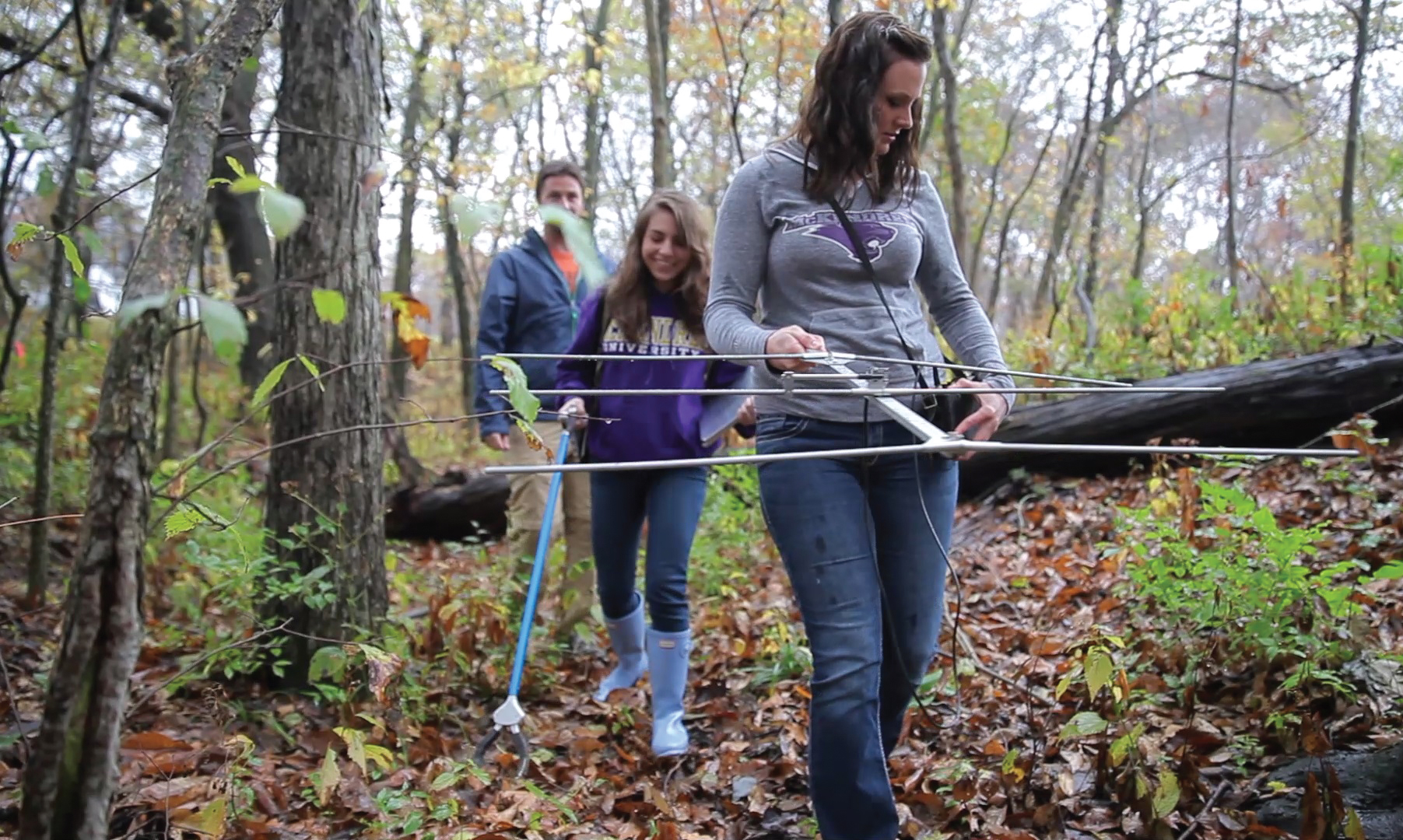Snake Hunt
 Most visitors to the Stemler Cave and Stemler Cave Woods Nature Preserves would prefer
to avoid venomous Northern Copperhead snakes.
Most visitors to the Stemler Cave and Stemler Cave Woods Nature Preserves would prefer
to avoid venomous Northern Copperhead snakes.
Not Sammi Schmidt ’15, Lexi Nash ’17, Aly Janosko ’17 and Nate Micklautz ’17. Several times a week, the four biology students and Dr. Ben Jellen visit the 200-acre woods above an underground cave near
Columbia and Millstadt, Ill., to search for and trap the highly camouflaged coppery
brown snakes. Their research is providing important data about Northern Copperheads’
hibernation habits.
The ones they catch are taken to the St. Louis Zoo animal hospital, where tiny radio
transmitters are safely surgically implanted just under the skin of adult snakes or
glued to the outer skin of baby snakes no larger than a pencil. They are then returned
to the nature preserve.
When Ben and his team visit the woods every couple of days, they dial into the radio
frequencies assigned to the snakes. The embedded transmitter emits a beep, which enables
the students to track a snake’s location, movement and underground depth.
“The faster the beeps, the warmer the snakes are, which tells us how far down in the
soil they are hibernating,” Sammi explained. A small orange flag is placed to mark
the spot wherever a snake is located. The students record ecological data such as
temperature, precipitation, cloud cover, whether the soil is loose or tightly packed,
and whether the snake is alone or with others. Copperheads hibernate from November to April. “No one is certain whether they hibernate
inside the cave, in terrestrial burrows or in tree root systems at the preserve,”
said Ben. “This project helps delineate critical habitat for many herpetological species
and contributes new information to aid habitat management practices within the preserve.
It’s a wonderful opportunity for student research. Once they have enough data, they
will publish their findings.”
Copperheads hibernate from November to April. “No one is certain whether they hibernate
inside the cave, in terrestrial burrows or in tree root systems at the preserve,”
said Ben. “This project helps delineate critical habitat for many herpetological species
and contributes new information to aid habitat management practices within the preserve.
It’s a wonderful opportunity for student research. Once they have enough data, they
will publish their findings.”
The students work closely as a team and each is conducting an independent study project.
Sammi, a senior studying conservation biology, is tracking the neonates’ movement
in their first year of life. Sophomore honors students Aly and Nate are studying hormonal
influences on the male and female snakes’ mating behavior.
Lexi, a sophomore pre-dentistry major, is studying genetics, DNA sequencing and multiple
paternity in litters of copperheads. “I’m able to apply what I’m learning in the classroom
to the outside,” she said. “I’m glad to have this hands-on experience because I’ll
be doing research the rest of my life.”
Their research is funded by a $2,000 grant from the Illinois Department of Natural
Resources-Illinois Wildlife Preservation Fund, as well as grants from the University.
McKendree leads the collaborative study with faculty members from Southwestern Illinois
College, Saint Louis University, the University of Illinois and the Illinois Natural
History Survey. The project will continue through 2015.
